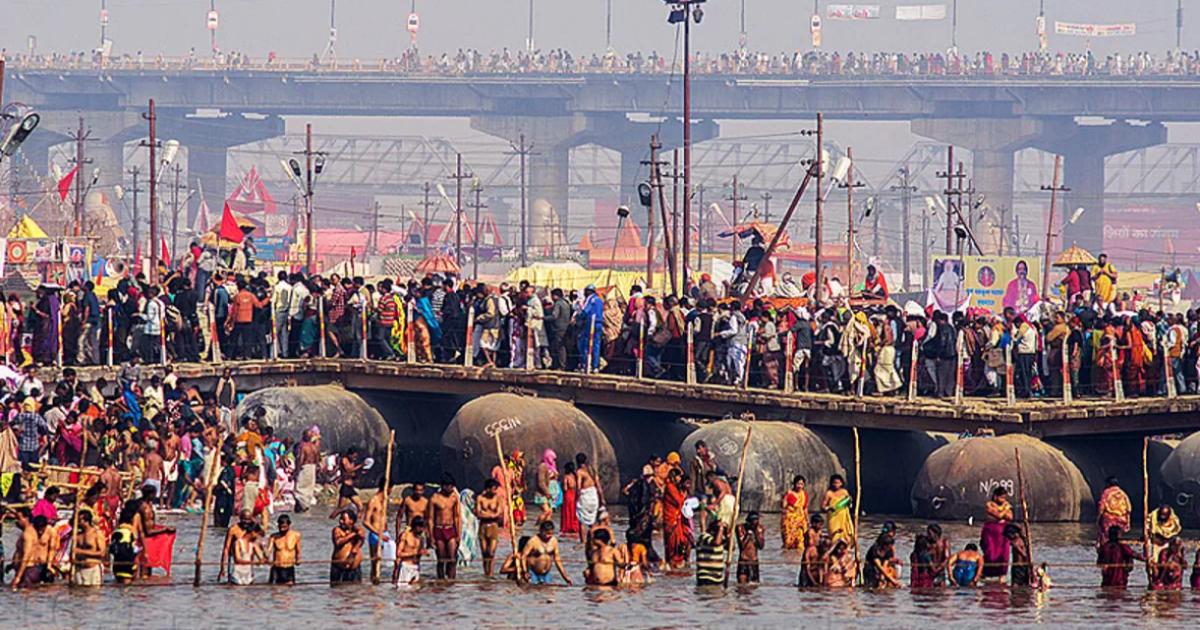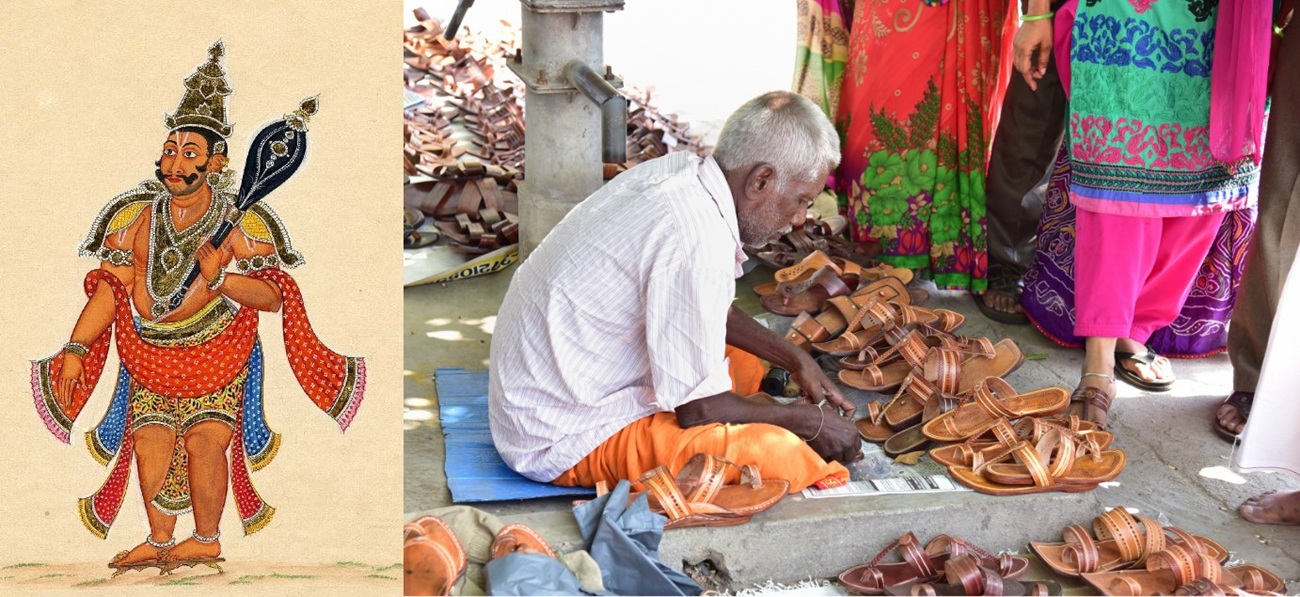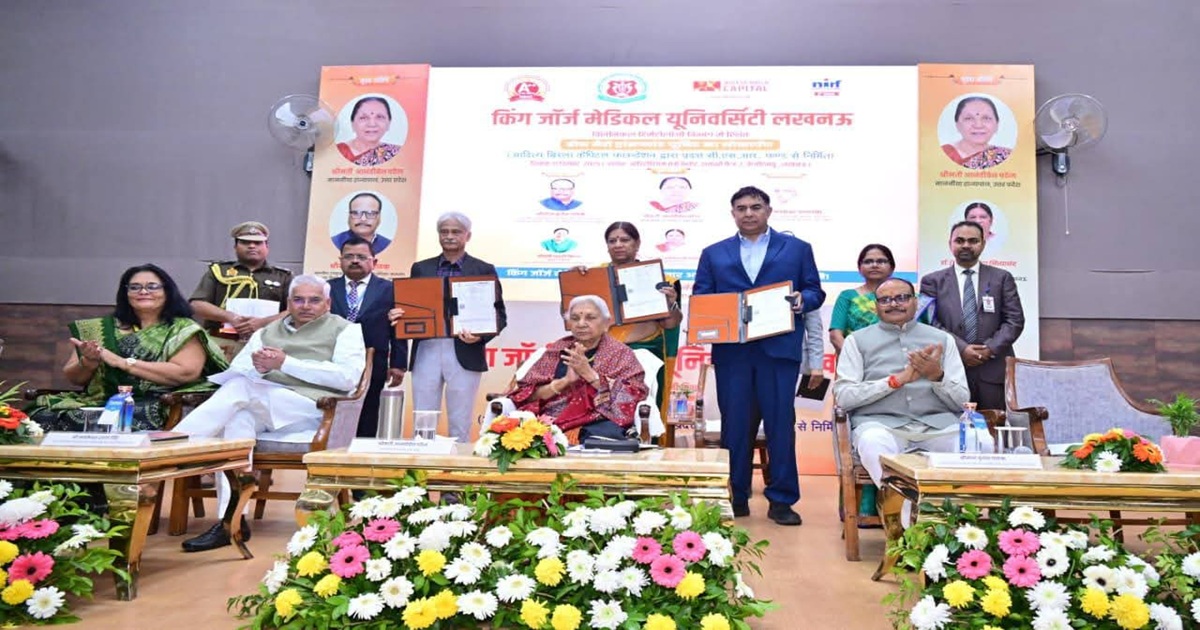
How Pontoon Bridges Are Powering the Maha Kumbh’s Massive Footfall
Lucknow: At the heart of the 2025 Maha Kumbh Mela in Prayagraj, pontoon bridges are serving as vital lifelines, enabling the smooth movement of millions of devotees, religious processions, and vehicles. Constructed over the sacred confluence of the Ganga, Yamuna, and mythical Saraswati rivers, these floating marvels are ensuring the seamless flow of pilgrims across the sprawling 4,000-hectare festival grounds.
With 30 pontoon bridges, the highest number ever built for the event, this project is a testament to both engineering prowess and meticulous planning. Over 1,000 workers have labored tirelessly to complete these structures, ensuring that faith and logistics work hand in hand at the world’s largest religious gathering.
A Legacy of Floating Bridges: From Ancient Persia to Present-Day India
The origins of pontoon bridges date back over 2,500 years, with Persian King Xerxes I famously constructing one in 480 BC to move his army across the Hellespont during the invasion of Greece. The Zhou dynasty in China also used similar floating bridges as early as the 11th century BC.
In India, the first recorded pipa bridge was built in October 1874 over the Hooghly River between Howrah and Kolkata. Designed by British engineer Sir Bradford Leslie, it was supported by wooden pontoons and remained operational until a cyclone led to its dismantling in 1943. The famous Howrah Bridge (Rabindra Setu) was later constructed in its place.
Today, pontoon bridges remain an integral part of Maha Kumbh’s infrastructure, evolving from ancient military strategy to a modern solution for managing massive crowds.
Building the Floating Marvels: A Feat of Engineering
The construction of 30 pontoon bridges began in August 2023, with workers toiling for over a year, sometimes 14 hours a day, to bring these structures to life.
How These Bridges Are Built
Each bridge is constructed using a combination of hollow iron pontoons, wooden planks, and sandy soil, designed to ensure strength and stability. The process involves:
• Lowering five-tonne iron pontoons into the river using cranes.
• Placing girder beams on top and securing them with nuts and bolts.
• Reinforcing the structure with wooden planks, iron angles, and sandy soil.
• Laying checker plates on the surface to provide additional durability.
The key to their buoyancy lies in Archimedes’ Principle—each pontoon displaces water equal to its weight, allowing these heavy iron structures to float.
Each bridge can withstand up to five tonnes of weight, but exceeding this limit could cause damage or even sinking. This makes crowd control and weight management crucial to their safe operation.
Ensuring Safety and Smooth Movement
With over 400 million devotees expected to visit the Maha Kumbh, managing foot traffic on the bridges is a monumental challenge. The tragic stampede on January 29, 2025, which resulted in at least 30 deaths and 60 injuries, underscores the importance of stringent crowd management.
To mitigate risks, authorities have implemented a round-the-clock monitoring system that includes:
• CCTV cameras on every bridge, with footage constantly reviewed at the Integrated Command and Control Centre.
• Deployment of 50,000 security personnel to manage crowds and direct foot traffic.
• Installation of over 2,500 surveillance cameras across the festival grounds.
• Establishment of 11 temporary hospitals to provide emergency medical assistance.
Given that each bridge can only support a maximum load of five tonnes, strict movement regulations are in place to prevent overloading.
Cost and Economic Impact
The Uttar Pradesh government has allocated ₹17.31 crore for the construction of these bridges, highlighting their economic significance.
The most expensive bridge, connecting Shri Nagvasuki Temple to Jhusi, costs ₹1.13 crore, while other bridges like Gangeshwar and Bharadwaj range between ₹50 lakh and ₹89 lakh.
Beyond their functional role, these bridges support the cultural and economic vitality of the Maha Kumbh, enabling grand religious processions, the movement of vendors, and facilitating tourism.
What Happens After Maha Kumbh?
Once the festival concludes on February 26, 2025, the pontoon bridges will be dismantled and stored for future use. Some will be relocated to other districts of Uttar Pradesh for temporary crossings, while others will be stored in Sarainayat (Kenihar), Trivenipuram, and Parade Ground in Prayagraj.
This sustainable approach ensures that the resources invested in building these floating marvels are maximized beyond just one event.
Awadh360 plus: A Symbol of Faith and Engineering Excellence
Pontoon bridges at the Maha Kumbh Mela 2025 exemplify a seamless blend of ancient wisdom and modern engineering. They not only facilitate the smooth movement of millions of devotees but also stand as a testament to human ingenuity.
As pilgrims walk across these floating pathways, they are not just crossing a river—they are treading upon centuries of history, faith, and innovation.
Popular Categories
Read More Articles
Business
D2C plant-based nutrition brand Earthful is hiring Moms to Speak on Menopause & is offering ₹1 Lakh Stipend! by Awadh 360° Desk December 15, 2025India
Appropriation vs. Appreciation: Reclaiming Indian Culture, Craft and Credit by Mohammed M. Raza December 13, 2025Politics
BJP turns to OBC leader Pankaj Chaudhary for UP top post by Awadh 360° Desk December 13, 2025Business
KGMU, Aditya Birla Capital Inaugurate State-of-the-Art BMT Ward to Transform Cancer Care in Uttar Pradesh by Awadh 360° Desk December 12, 2025



